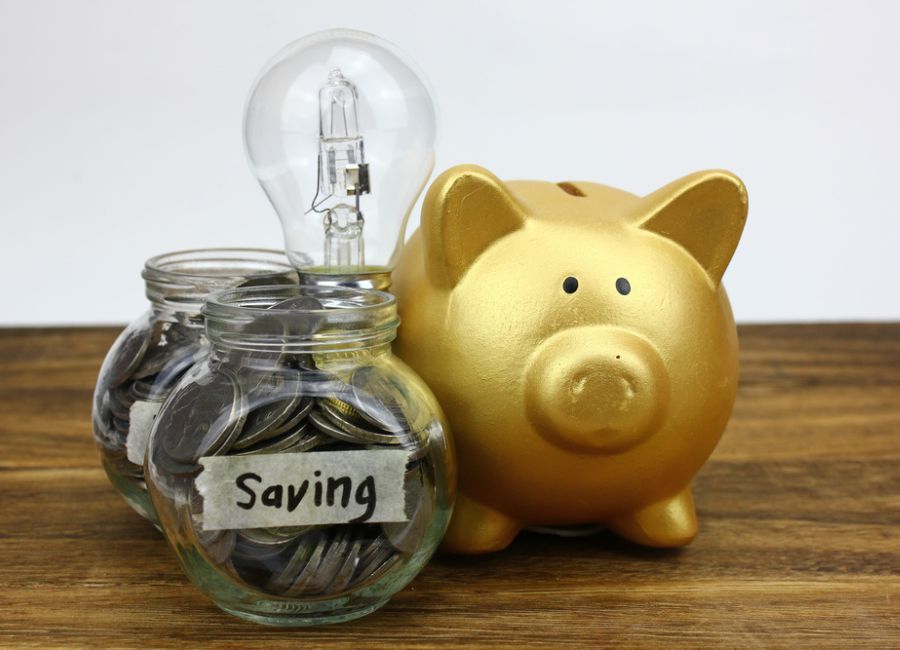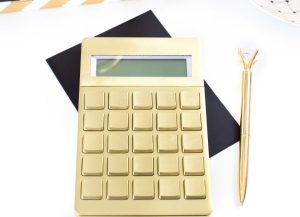I’ve been budgeting and saving for many years. With that comes picking up on tips and tricks, and learning what helpful savings accounts strategies work and don’t work. I’m a firm believer in the notion of one savings account per goal. Not only does this keep you organized, but it also keeps you on top of how close you are to reaching that goal.
I currently have 7 primary savings accounts. Each of them has a specific purpose and a specific strategy behind them. Today, I’m breaking those accounts and strategies down. I’m doing this to inspire you to get strategic with your own savings accounts. I also want you to get an idea of how I think about saving – in the hopes that you’ll take what works for you and thrive!
Breaking Down My Savings Accounts and Strategies
Savings Account #1: Emergency Fund
Strategy: Saved in a High-Yield Savings Account (HYSA)
My primary savings account is my Emergency Fund. At first, this account started with 3 months’ worth of expenses, then six, then 15 when I decided I wanted to run City Girl Savings full-time. I don’t care who you are, what you do, or how much you make, you need an emergency fund. An emergency fund is there to pick you up financially when things don’t go according to plan. Everyone’s emergency fund amount will vary, but $1000 if you’re focused on paying down debt and 3-6 months’ worth of expenses if you don’t have debt, are great starting points.
For me, this type of savings is saved in a high-yield savings account. HYSAs are often found at online banks. Because these banks have less overhead than brick and mortar locations, they can pay out more to their customers in the form of interest. At the time of this article, my HYSA is yielding a 3.75% interest rate.
It’s best to have your emergency fund in this type of account for a few reasons. First, emergencies don’t happen all the time. That means, your money is just sitting until it needs to be used. If it’s just sitting, you may as well earn as much interest as possible. You can only do that through HYSAs. Now, you may be thinking: why not invest the money? Because if you had an instant emergency, you may have to liquidate your investments at a loss – not smart.
Another reason to keep your emergency fund in a HYSA is because it’s not as easily accessible as an account that’s linked to your checking. Because of this, you need to think about how badly you actually need the money. It’s a great way to avoid touching your savings!
Savings Account #2: Business Emergency Fund
Strategy: Saved in a High-Yield Savings Account (HYSA)
The next type of savings account I have is an emergency fund for my business. Just like emergencies happen in our personal lives, emergencies happen in businesses as well. I could always leverage the cash in my business’ operating account, but I’d rather be prepared and have something saved…just in case.
For the same reasons I keep my emergency fund in a HYSA, I keep my business’ emergency fund in a HYSA as well. I earn the most interest and don’t have a clear line of sight into the money. When I need it, I know how to get it. If I don’t need it, it’s earning as much as possible in interest.
Savings Account #3: Travel
Strategy: Savings attached to my checking
The next type of savings account I have is a savings account specifically for travel. I save for travel on a consistent basis, whether I have a trip planned or not. Check out the CGS podcast episode Vacation Planning on a Budget for my strategies when saving for a vacation! Because traveling is important to me, it’s important that I save for it. If I ever want to book a spontaneous trip, saving for travel allows me to do so and not feel negative impacts with my budget.
I keep my travel savings in a savings account attached to my checking. I do this primarily because I don’t have more than a few thousand dollars in there at a given time (I travel quite often). So, the interest I’d earn isn’t life-changing. Plus, I sometimes randomly transfer amounts in there…depending on the status of my checking account. If I ever needed to book something, I don’t have to wait for the funds to hit my checking, I can do a quick transfer and book away.
Savings Account #4: Annual Expenses
Strategy: Savings attached to my checking
The next type of savings account I have is an account for my annual expenses. This could also be considered a sinking fund. I take the total cost of all my annual expenses and divide the number by 12 (12 months in a year). I take that number (my monthly cost) and factor it into my budget. Every month, I make sure to transfer that amount to my savings for Annual Expenses.
This helps me avoid being caught off-guard by annual expenses. It also makes saving for such expenses easier because I don’t need as much when I break it down monthly. My annual expenses happen multiple times throughout the year, so having the funds in an account that’s easily accessed is beneficial for me.
Savings Account #5: “Close By” Savings
Strategy: Savings attached to my checking
The next type of savings I have is a “close by” savings. I receive a lot of questions about this. Basically, my “close by” savings is a mini emergency fund that’s attached to my checking account. HYSAs are great, but it can take a day or two for the money to hit your checking account. Sometimes, I need money faster. So, I keep a small amount of money in a savings account linked to my checking for any emergencies that need quick resolve.
Because I’m no longer an over spender, I can keep these accounts linked to my checking and not touch them. Each of the savings’ accounts that are linked to my checking have a specific purpose. I don’t touch the accounts unless I need them for their specific purpose.
Savings Account #6: Palm Springs Home
Strategy: Investment
The final two types of savings accounts I have are both investment accounts. The first one is a savings for my Palm Springs Home. When I first started saving for this goal, I didn’t have plans to purchase the home for 5 or more years. Because of this, I figured the best returns would come from investing. At one point, my rate of return was over 10%. Obviously, the market has since taken a turn, but I still plan on riding it out.
Investing is a great strategy for saving for long-term goals. Having a specific amount of money invested every month can help you save and accumulate more in preparation for reaching your goal. I currently have $50/month going into this account. At times I’ll do larger lump sums, but even $50/month adds up over time.
Savings Account #7: Build Wealth
Strategy: Investment
The last type of investment account I have is an additional savings for building wealth. I don’t see myself accessing these funds until I’m much older in life. Because investing is still the best way to build long term wealth, for me it makes sense to invest early on. Just like my Palm Springs account, I have $50/month going into an investment account to help me build wealth.
Bonus Account #8: IRA
Strategy: Retirement
I didn’t originally include my IRA in my list of savings accounts, but I wanted to at least mention it. Since I have no intention of using this money until it’s time to retire, I often overlook it. However, saving for retirement is still a form of savings! I’m in year 3 of my IRA and strive to max it out every year.
Related: 5 Ways to Revamp Your Savings Goals
Like I mentioned, I’ve been saving for quite some time. Please don’t feel like you need to be where I am…you don’t! You just need to find a saving strategy that works for you and leverage it to reach your goals. Make sure you’re not saving too much money also. What’s the point of all the hard work if you don’t get to enjoy your life a little bit in between?! What are your current savings accounts? Do you have a strategy for them? Share your savings accounts and strategies in the Comments section below and let’s discuss!
-Raya
The CGS Team







6 thoughts on “Breaking Down My Savings Accounts and Strategies”
The HYSA is a great idea! I just opened one recently because there are goals I’m looking to reach.
Love to hear that Asha!
Savings for annual expenses makes so much sense. I am currently being blindsided by those. So great tip to prepare for next year. Thanks!
Yes! It makes such a big difference when those annual bills come due!
Wow I never thought about saving in an investment account. Especially with purchasing real estates!!! This is so smart.
Game changer! My investment account for Palm Springs is generating a 7% annual return!